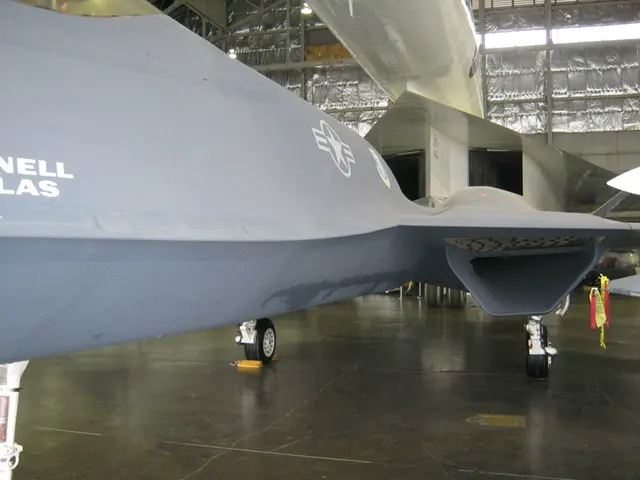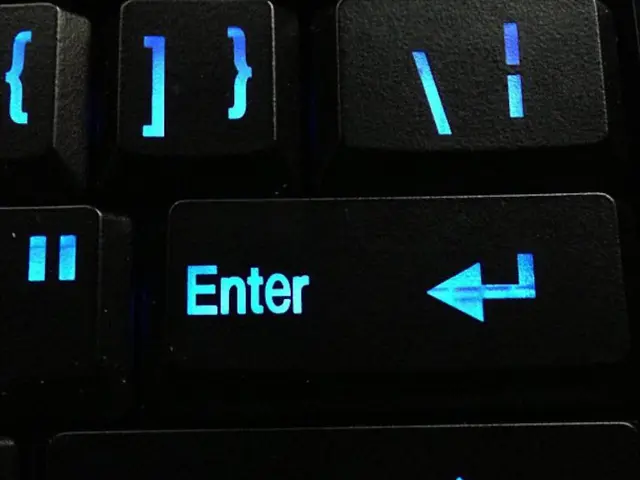Chaotic Skies Over Newark: The Tumultuous Tale of Air Traffic Control
Airport radar system in Newark experiences another brief failure, lasting approximately 90 seconds.
In a nasty twist of events, for the second time in as many weeks, air traffic controllers (ATC) managing flights at Newark Liberty International Airport (KEWR) have been left in the dark, unable to communicate or watch the aircraft under their control. This is the latest blow in a growing trend that's leaving travellers and aviation enthusiasts on edge.
The Federal Aviation Administration (FAA) has confirmed that controllers in Area C of the Philadelphia Terminal Radar Approach Control (TRACON) facility, who assumed management of Newark's airspace from Long Island, New York, lost communications and radar around 3:55 a.m. EDT on Friday. The cause? A telecommunications outage that lasted about 90 seconds.
Rumors swirl that a similar 90-second outage occurred on April 28, and radar has gone dark on at least two other occasions. The April incident rattled controllers so much that several took mental health leave, leaving only 16 certified professional controllers (CPCs) available at the facility.
In a bold step forward, U.S. Department of Transportation Secretary Sean Duffy unveiled the DOT's advanced Air Traffic Control (ATC) modernization plan earlier this week. Highlights include a switch to fiber optic, as well as the creation of 15 new towers colocated with TRACONs and six ATC centers. Radar and automation upgrades will also be implemented across the ATC system.
This ambitious plan has garnered support from major airline CEOs and unions representing controllers and pilots. Duffy is on a mission, aiming to implement these enhancements within three to four years, with the help of an estimated $12.5 billion support package from Congress.
Despite these plans, Philadelphia controllers have been ringing alarm bells for months. Alleviating these concerns isn't a walk in the park.
The Perfect Storm
A perfect storm of issues has been brewing within the FAA, dating back to the COVID-19 pandemic. With hiring at a snail's pace and a wave of retirements, the agency finds itself grappling with a shortage of around 3,000 controllers.
New hires face an intensive and time-consuming ATC training process, making it a challenge to attract new blood. Plus, Newark's complex airspace adds another layer of difficulty.
Antiquated technology only complicates matters further. A March Government Accountability Office (GAO) report deemed 105 out of 138 FAA ATC systems "unsustainable" or "potentially unsustainable."
Controllers at Newark have been feeling the brunt of these issues for the past two weeks, causing over a thousand flight delays and cancellations. The FAA has vowed to upgrade technology and beef up staffing at the Philadelphia facility, but equipment issues persist.
The Tide of Unrest
The problems started when the FAA relocated responsibility for Newark airspace from the New York TRACON (N90) to Philadelphia, citing staffing shortages at N90 as the reason. This shift was met with resistance from the National Air Traffic Controllers Association (NATCA), who criticized the relocation of several N90 controllers.
In July, controllers began anonymously reporting issues with the transition to NASA's Aviation Safety Reporting System. One controller stated that they received only a short, verbal briefing from the FAA before their first shift managing Newark airspace from Philadelphia, a practice they described as "utterly shameful."
Communication gaps may have contributed to a near miss in August, when aircraft from both facilities were vectoring around a thunderstorm on the same heading and altitude. More anonymous reports were made in July expressing concerns about communication between New York and Philadelphia.
The Philadelphia TRACON suffered another radar outage in August, delaying departures at Newark by an average of 105 minutes. The following month, a communication failure caused the airspace to close for nearly an hour.
After systems came back online, controllers were heard scrabbling to restore communications. Months later, controllers continue to face issues, leading to further ground delays for Newark.
The FAA and DOT are taking strides to address the problem, but with a complex web of staffing and technological issues, progress may be slow. That could spell more disruptions and reduced activity at Newark in the near future.
- The current predicament at Newark Liberty International Airport involves air traffic controllers (ATC) who've been unable to communicate or monitor flights due to a recurring telecommunications outage.
- This incident occurred in the Philadelphia Terminal Radar Approach Control (TRACON) facility, where controllers took over Newark's airspace from Long Island, New York.
- This situation is concerning for travellers and aviation enthusiasts, marking a growing trend of uncertainty in the aviation industry.
- The Federal Aviation Administration (FAA) is working on a modernization plan, aiming to upgrade radar, automation, and implement new towers and ATC centers with the aid of a $12.5 billion support package from Congress.
- The Philadelphia TRACON has faced a perfect storm of issues, including staffing shortages, antiquated technology, and a complex airspace, leading to confusion and delays.
- Anonymous reports by controllers suggest communication gaps and near misses occurred during the transition from New York to Philadelphia control, ultimately causing thousands of flight delays and cancellations.
- Despite efforts by the FAA and Department of Transportation to resolve the issues at Newark, the continuous communication failures and outages may lead to increased ground delays and reduced activity in the near future, due to the intricate web of staffing and technological challenges.






